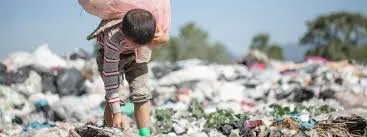Climate change is not just a distant threat; its impacts are being felt across the globe, with devastating consequences for communities and ecosystems. Among the most vulnerable to these impacts are children, who face disproportionate risks and challenges in the face of climate-related disasters. Understanding the policy implications of climate change on children and Disaster Risk Reduction (DRR) is crucial for developing effective strategies to mitigate risks and build resilience. This article investigates the implications of climate change on children’s vulnerability to disasters and assesses the adequacy of existing DRR policies in addressing emerging risks associated with climate variability and extreme weather events.
Climate change exacerbates the frequency and intensity of natural disasters, including hurricanes, floods, droughts, and wildfires, placing children at increased risk of harm. Rising temperatures contribute to heatwaves and exacerbate the health risks associated with heat-related illnesses, particularly among vulnerable populations such as children. Moreover, changes in precipitation patterns can lead to water scarcity, food insecurity, and displacement, further compounding children’s vulnerabilities.
Existing DRR policies must adapt to the evolving challenges posed by climate change to effectively protect children and communities. However, a critical assessment reveals gaps and shortcomings in addressing the specific needs of children in disaster risk management. For instance, a study conducted in the United States found that many DRR policies lack provisions for child-friendly communication, evacuation plans tailored to children’s needs, and inclusive approaches to engage children in decision-making processes.

Furthermore, the adequacy of existing DRR policies in addressing emerging risks associated with climate change varies widely across regions and contexts. In low-income and vulnerable communities, children are disproportionately affected by climate-related disasters due to inadequate infrastructure, limited access to essential services, and socioeconomic disparities. Despite growing recognition of the need for child-centered approaches in DRR, implementation remains fragmented, with insufficient resources and capacity to effectively protect children from climate-related risks.
Addressing the policy implications of climate change on children and DRR requires a holistic and integrated approach that prioritizes children’s rights, well-being, and participation. This includes mainstreaming climate change adaptation and mitigation measures into national DRR strategies, investing in child-friendly early warning systems and disaster preparedness programs, and enhancing access to education, healthcare, and social protection for vulnerable children.
Moreover, strengthening international cooperation and collaboration is essential for sharing best practices, mobilizing resources, and advocating for children’s rights in global climate negotiations. The Sendai Framework for Disaster Risk Reduction and the Paris Agreement on Climate Change provide important frameworks for integrating climate change adaptation and DRR efforts, with specific provisions for protecting children and vulnerable groups.
In conclusion, addressing the policy implications of climate change on children and DRR is essential for safeguarding the future generation against the impacts of climate-related disasters. By prioritizing children’s rights, resilience, and participation, policymakers can develop more effective and inclusive policies to build climate-resilient communities and ensure a sustainable future for all.